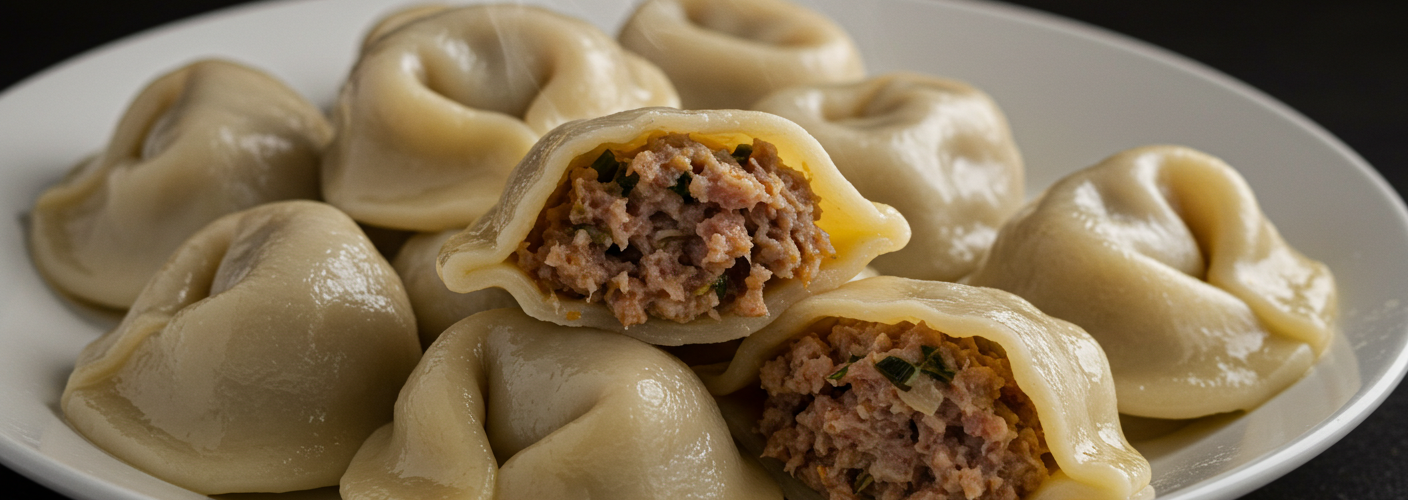Pelmeni are a beloved dish with roots tracing back to Eastern Europe, particularly cherished in Russia and surrounding countries. Differentiated by their thin dough exterior and savory fillings, these dumplings offer a perfect combination of comfort, taste, and tradition, making them a staple in many households.
What Are Pelmeni?
At their core, pelmeni are small dumplings made from unleavened dough, which is typically rolled out to a thin sheet and cut into circles. The beauty of pelmeni lies in their filling, which can vary widely depending on regional preferences and personal tastes. Common fillings include ground meat—beef, pork, or lamb—with onion and seasoning, but vegetarian variations filled with mushrooms, potatoes, or cheese also cater to diverse palates.
The preparation of pelmeni is often a communal activity, where family and friends gather to create batches that can be enjoyed fresh or frozen for later use. This communal cooking tradition helps to solidify the social bonds around the dinner table, making pelmeni not just a meal, but a shared experience.
The Craft of Making Pelmeni
To create the perfect pelmeni, the dough must be meticulously prepared. It typically consists of flour, water, eggs, and a pinch of salt, kneaded until smooth and elastic. Once the dough has rested, it’s rolled out thin and cut into circular shapes, usually around three inches in diameter.
The filling is placed in the center of each dough circle, after which the edges are carefully pinched together to create a sealed pocket, ensuring that the delicious filling remains locked inside during cooking. This process can be enhanced by the help of a pelmeni press, which not only speeds up production but also ensures consistent shapes and seals.
Cooking Pelmeni
Cooking pelmeni is straightforward. They can be boiled, steamed, or pan-fried. While boiling is the most traditional method, many enjoy the extra texture and flavor added by pan-frying them after boiling. To boil pelmeni, simply drop them into salted water, waiting until they float to the surface to indicate they are fully cooked. It usually takes just a few minutes, making them a quick option for dinner.
Once cooked, pelmeni are often served with a variety of accompaniments. Sour cream, melted butter, or a sprinkle of dill are popular choices that enhance their flavor profile. For those seeking a little heat, a drizzle of hot sauce adds a perfect kick, while a side of broth can transform the meal into a heartwarming soup.
Cultural Significance
Beyond their delicious taste, pelmeni carry a rich cultural significance. They have been a staple in Slavic cuisine for centuries, originally developed as a way to preserve meat through the long winters. In many Eastern European families, the making and sharing of pelmeni represents culinary tradition and heritage, a way to pass recipes down through generations.
In recent years, pelmeni have gained popularity outside their traditional locales, becoming a favorite among foodies and home cooks alike. As chefs experiment with new flavors and fillings, this classic dish continues to evolve, yet it remains true to its roots.
In summary, pelmeni are more than just a dish; they symbolize warmth and togetherness. Whether enjoyed at a cozy family dinner or served at a festive gathering, these delightful dumplings invite everyone to savor not just their taste, but the memories they create.




Add comment